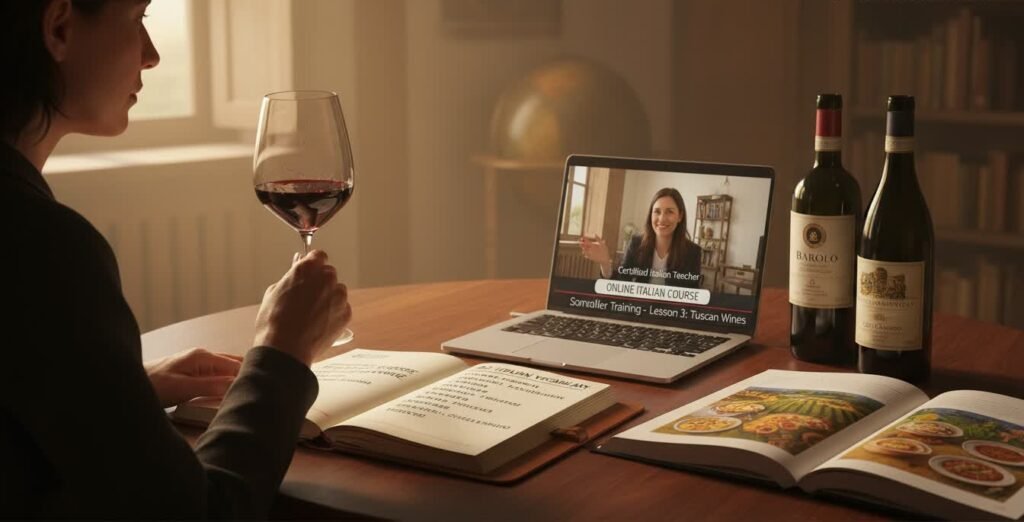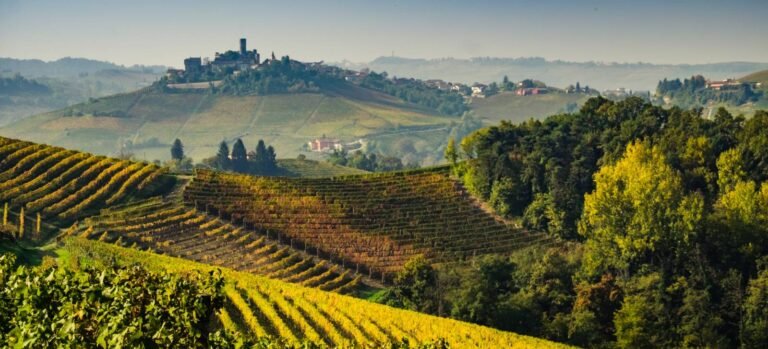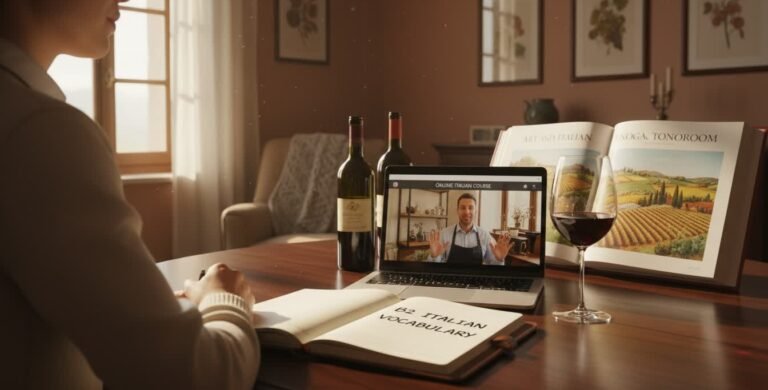
Beyond "Buono": mastering the italiana vocabulary of fine wine and tasting.
If you are a cultural connoisseur, you know that great wine deserves more than a single adjective. When you travel to Tuscany or Piedmont, you don’t want to simply say "è buono"; you want to describe a Barolo with the same elegance and precision as a local sommelier.
At the B2 level, your vocabulary needs to rise to the level of your palate. Our focus is not on recipes, but on the refined language of tasting and terroir that elevates your experience. This is why Magnifico Mondo Italiano integrates italian courses food culture into our advanced lessons.
Ti piace? Condividi l'articolo.
The four pillars of Italian wine vocabulary (B1/B2)
1. Vista (Sight)
This involves describing the color and clarity of the wine.- Cristallino (Crystalline/Clear): Used for wines with perfect transparency.
- Velato (Veiled/Hazy): Used for wines with cloudiness.
- Archetti (Arches/Tears): The legs the wine leaves on the glass, indicating alcohol and body.
2. Olfatto (Smell)
Moving beyond "smells good," you must identify specific aromas.- Floreale (Floral): Scents like rose or violet.
- Speziato (Spicy): Hints of cinnamon or pepper.
- Etereo (Ethereal): Complex scents typical of aged wines.
3. Gusto (Taste)
This is where the complex vocabulary of sensations comes in.- Morbido (Soft): Indicates low acidity and smooth tannins.
- Ruvido (Rough): Indicates aggressive tannins.
- Armonico (Harmonious): Used when all components (acidity, alcohol, tannins) are perfectly balanced.
4. Territorio (Terroir)
The cultural language linking the wine to its origin.- Autoctono (Indigenous): Grape varieties native to the region.
- Denominazione (Appellation): The official designation (DOC, DOCG).
- Affinamento (Aging/Refining): The process in barrels or bottles.


Culture-first immersion: the language of a Tuscan cantina
Reading this list is the first step; using it in context is the B2 lesson.
Our live online italian classes use this methodology: imagine analyzing an interview with a Brunello producer or listening to a sommelier describing a Barolo. Your certified teacher guides you not only through the vocabulary but through the cultural etiquette of wine dialogue.
The vocabulary of fine wine is a lesson in culture—an elegant way to use the B2/C1 subjunctive and formal address (Lei).
Conclusion: elevate your vocabulary to the gourmet level
Your journey in Italian should not end with simple ordering. It should elevate you to the culture you love. Mastering the vocabulary of Enogastronomia d’Élite demonstrates a commitment to fluency that goes beyond the classroom.
Are you ready to elevate your Italian to the gourmet level? Scegli il corso di italiano migliore che esista.
